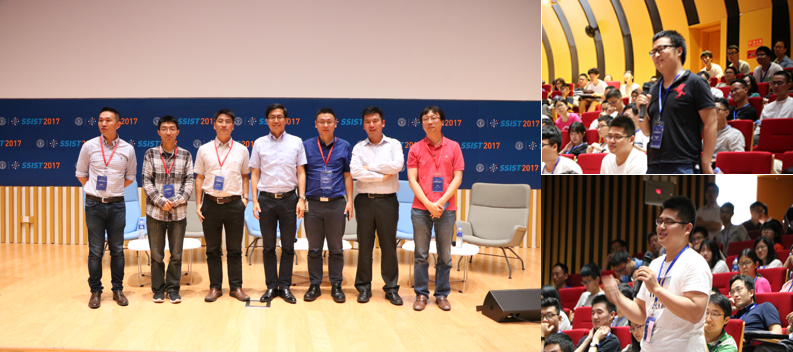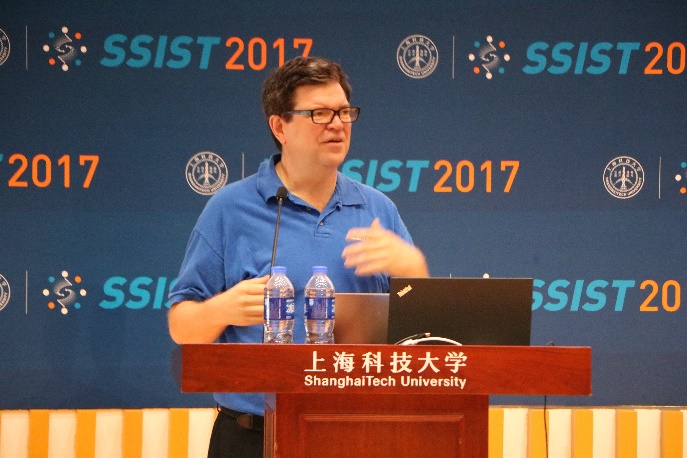The fourth academic ShanghaiTech Symposium on Information Science and Technology 2017 (SSIST 2017) was held in the university’s auditorium from July 2nd to 4th.
The theme of SSIST 2017 was Artificial Intelligence (AI), Computer Vision, Deep Learning and Computer Security. The symposium introduced advanced scientific research results and highlighted developing directions. The symposium attracted more than 700 domestic and foreign participants. President Mianheng Jiang attended the conference and delivered an opening speech, which gave all the speakers and attendees warm welcome and greetings.

The SSIST 2017 invited Bernd Girod (Professor at Stanford University and member of the US National Academy of Engineering),Professor Narendra Ahuja (Professor at University of Illinois at Urbana-Champaign, IEEE Fellow, ACM Fellow and AAAI Fellow), Jitendra Malik (Professor of UC Berkeley, member of the American Academy of Engineering and member of the American Academy of Sciences), Facebook Artificial Intelligence Research Center Director Yann LeCun (Member of National Academy of Engineering) and Microsoft Global Executive Vice President Harry Shum (Member of the United States National Academy of Engineering). 29 speakers gave wonderful presentations to the audience in the three days.
The symposium also showcased around 30posters submitted by attending students.

Yann LeCun emphasized that deep learning was at the root of a revolutionary progress in visual and auditory perception by computers, and that it is pushing the state of the art in natural language understanding, dialog systems and language translation. Deep learning systems are deployed everywhere from self-driving cars to content filtering, search, and medical image analysis. But almost all real-world applications of deep learning use supervised learning in which the machine was trained with inputs labeled by humans. But humans and animals learn vast amounts of knowledge about the world by observation, with every little feedback from intelligent teachers. Humans constructed complex predictive models of the world that allow them to interpret percepts, predict future events, and plan a course of actions. Enabling machines to learn predictive models of the world is a major step towards significant progress in AI. He described a number of promising approaches towards unsupervised and predictive learning in his talk.


Harry Shum gave a talk named Artificial Intelligence: From the Labs to the Mainstream. He presented that there were three big forces that are making AI possible: huge amounts of data with the Internet and sensors everywhere; massive computing power and break through algorithms. These forces are enabling computers to accomplish more and more sophisticated tasks on their own with deep learning. In his talk, he discussed Microsoft’s overall efforts and progress with AI research and product development, with a particular focus on computer vision. Microsoft has long been committed to developing new computer vision technologies, making them available to developers, and incorporating them into many products. He briefly reviewed more than 25 years of computer vision research at Microsoft Research(MSR), highlighting MSR’s contributions to the vision community and emphasizing the importance of long-term commitment to funding successful industrial research labs.
Our associate professors Shenghua Gao and Kewei Tu also delivered fabulous talks at the symposium. All the wonderful talks sparked rounds of applause from the audience.
SSIST2017 is the fourth symposium that SIST held and last year’s theme was virtual reality and robotics.





 沪公网安备 31011502006855号
沪公网安备 31011502006855号


